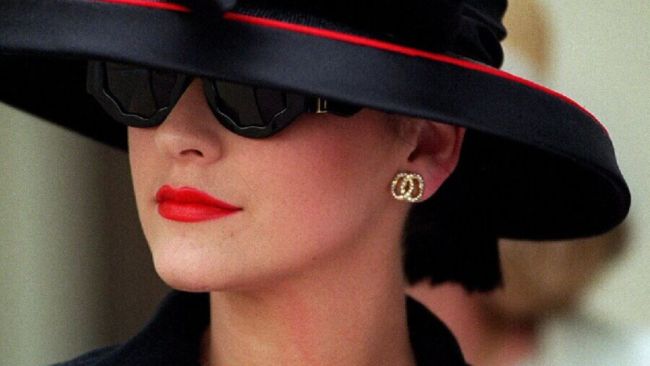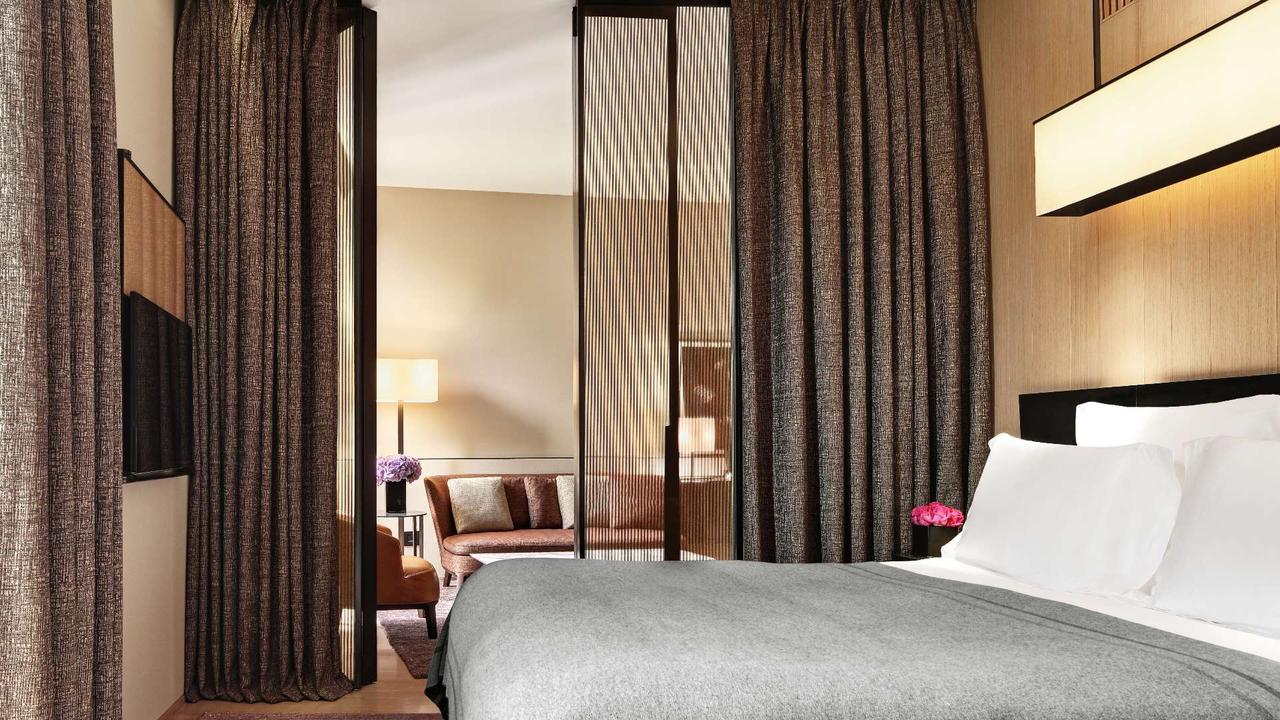Glittering prizes
LVMH’s purchase of a controlling stake in Bulgari hasn’t fazed the jewellery company’s CEO Francesco Trapani, who sees only advantages in the deal.
IT was the best-kept secret in the luxury industry, one known only to a handful of people at the very top of the luxury tree, one that would dramatically reshape the industry and one that, in the end, would be worth almost $6 billion.
When the world’s biggest luxury group LVMH Moet Hennessy Louis Vuitton announced that it was acquiring 50.4 per cent of the family-owned Italian jewellery brand Bulgari it shocked the industry.
LVMH, after all, had been busy since last October buying up shares of the French luxury brand Hermes in what many people – particularly Hermes chief executive Patrick Thomas – saw as a hostile takeover attempt. Today LVMH has a 20.2 per cent stake in Hermes and insists that it has no intention of taking control of the company, although it does say it won’t be a passive investor.
The Bulgari deal, therefore, seemed to come straight out of left field, especially when you consider that in 2007 the company’s vice chairman Nicola Bulgari, a grandson of the company’s founder Sotirios Boulgaris (from whose name Bulgari is derived), told WISH in an interview that the family had no intention of selling the company to a fashion conglomerate. “What is the fun to sit down in the Caribbean with a big yacht?” was his response to our reporter’s question about selling up.
With €4.3 billion (almost $6 billion) from the transaction to play with, Nicola Bulgari and his family could well afford to buy one hell of a yacht if they so desired. The family, however, wants to make Bulgari an even bigger force in fine jewellery and watches before retiring to the Caribbean.
Since 1984, Nicola’s nephew Francesco Trapani has been the company’s chief executive officer and with the acquisition – which Trapani prefers to call a strategic alliance – he will become head of LVMH’s watch and jewellery division, which includes brands such as Tag Heuer, Zenith, Hublot and De Beers, as well as a member of the board of directors of LVMH (Nicola and his brother Paolo will remain vice chairman and chairman of the Bulgari board). So why the change of heart?
“When we thought about doing something with another company what we had in mind was not the simple selling of the company, to get money and go away,” Trapani tells WISH. “We wanted to change the profile of our entrepreneurial activity in the luxury market. And going from a controlling stake in a relatively contained company into a much larger company with more means enables us to take advantage of opportunities and also to be more solid and less volatile.”
Trapani has been in talks with most of the major luxury companies in recent years about a potential sale. “It was very clear that a number were very interested in Bulgari. They told me this. But nobody in the past offered us anything because they knew we were not interested. In this particular case it was different because we started discussions with several of these groups and in principle all of them were interested and we started getting offers. At the end, the package we got from LVMH was the best one.
“LVMH was the best possible solution because it is number one in the world of luxury and because it is particularly diversified so it’s even more solid and less volatile than some other competitors. They were not looking for a straight sale or purchase of the company but they wanted to make a sort of alliance with us in order to improve their presence in jewellery and watches and to take advantage of our experience. They were ready to have us on the board and to be involved in the management of the company. So all in all we got everything, which is why we were ready to proceed.”
When the acquisition was announced, Women’s Wear Daily said “the luxury megadeal is back”. In one fell swoop, Bernard Arnault, chairman of LVMH, had reshaped the watch and jewellery sector. The deal doubles the size of LVMH’s watch and jewellery division, which in 2010 had sales of €985 million (Bulgari had sales of €1.06 billion). It still, however, leaves LVMH a long way behind the leaders in watches and jewellery. Richemont, which owns brands including Cartier, Van Cleef & Arpels, Piaget, and IWC, had sales in 2010 of €5.1 billion; and Swatch Group, which owns brands including Omega, Longines and Tissot, had sales of nearly €5 billion.
Bulgari is by no means coming cheap to Arnault. The €4.3 billion in shares and cash that LVMH is paying for
a controlling stake represents a 60 per cent premium to its pre-acquisition share price. At the time of the sale, Arnault told the UK’s Financial Times that it was a good deal for Bulgari, but one that would pay off for LVMH
in a seven or eight-year time frame. LVMH is paying more for Bulgari than it has paid for any company in the past.
The Bulgari family will contribute their controlling stake of 152.5 million shares in exchange for 16.5 million newly issued LVMH shares. The deal makes the Bulgari family the second largest family shareholder in LVMH and represents the first time in 23 years that LVMH has issued new shares, which means Arnault’s ownership of the conglomerate is slightly diluted.
Despite all this, Trapani is confident the 127-year-old jewellery company will retain a degree of independence. “I think Bulgari will remain what it is today,” he says. “It will remain very independent of the other brands because LVMH has a philosophy to give the different brands their latitude and their independence in order that they retain their DNA. And at the same time, of course, we are going to take advantage of the organisation so that we end up with savings in costs and our growth will be facilitated.” Trapani says his new role will be a challenge as he goes from having to care for just one brand to helping his team take care of eight different ones. He will remain based in Rome and around half his time will be spent on Bulgari.
In recent years, Bulgari has expanded beyond watches and jewellery into accessories, leather goods, fragrance and cosmetics, businesses that LVMH knows and operates extremely successfully. “In jewellery we probably don’t have that much to learn,” says Trapani, “but in accessories we are young and small and certainly now that we are associated with one of the largest, if not the largest, accessory makers in the world, it will give us some mileage. This, of course, cannot be translated immediately into a big increase in sales, it takes time.”
Trapani says Bulgari has invested aggressively in the Australian market in recent years and that it is performing well. In a sign of the strength of the market here, it is launching its latest jewellery collection, Mediterranean Eden, in Australia. The company is also hosting a black-tie fundraising dinner for the National Gallery of Victoria’s 150th anniversary and will donate a white gold and diamond Spiga necklace valued at more than $180,000 as a lucky door prize (tickets for the event cost $150 and $100 of each ticket will be donated to the NGV).
Despite the strength of the Australian market, more stores here are not a priority for Bulgari at the moment – in fact, the only region that is a priority for more stores is Greater China, which very recently become the company’s number one market. “We have a strategy that calls for an expansion of our distribution network only in Greater China,” says Trapani. “In the rest of the world we will have to make what we have more productive and all the efforts will be in improving our product portfolio, in making our communications more effective and in making our service to the client better.”
According to Trapani, although WWD declared that the luxury megadeal was back in vogue, that doesn’t necessarily mean we’re about to see a repeat of the acquisition frenzy the industry experienced in the 1990s. At the same time, however, he cautions that it is going to become increasingly difficult for small brands to stay independent if they want to grow and, in the long term, there will be further consolidation of the industry.
“Thirty years ago the market was in the hands of a lot of small independent companies,” he remarks. “Today we have a few, very large multinational groups that are protagonists. I don’t think we are going to see independent companies disappear altogether but I think in 10 years from now we are going to see these groups perform particularly well and have an even bigger market share.
“The market is becoming more competitive and more geographically articulated. In the past you were supposed to be a successful company in five, six or seven countries in Europe plus the US and Japan. Now it’s a different game because you have to be in Korea and China and in the Middle East and Russia and Brazil and so on. So, more and more, it’s a market where scale counts and independent companies can prosper provided that they do sell things. If you do a new product it must be a stellar product, if you do an advertising campaign it must be super because the brands you are competing with are much larger and have more finance available.”



